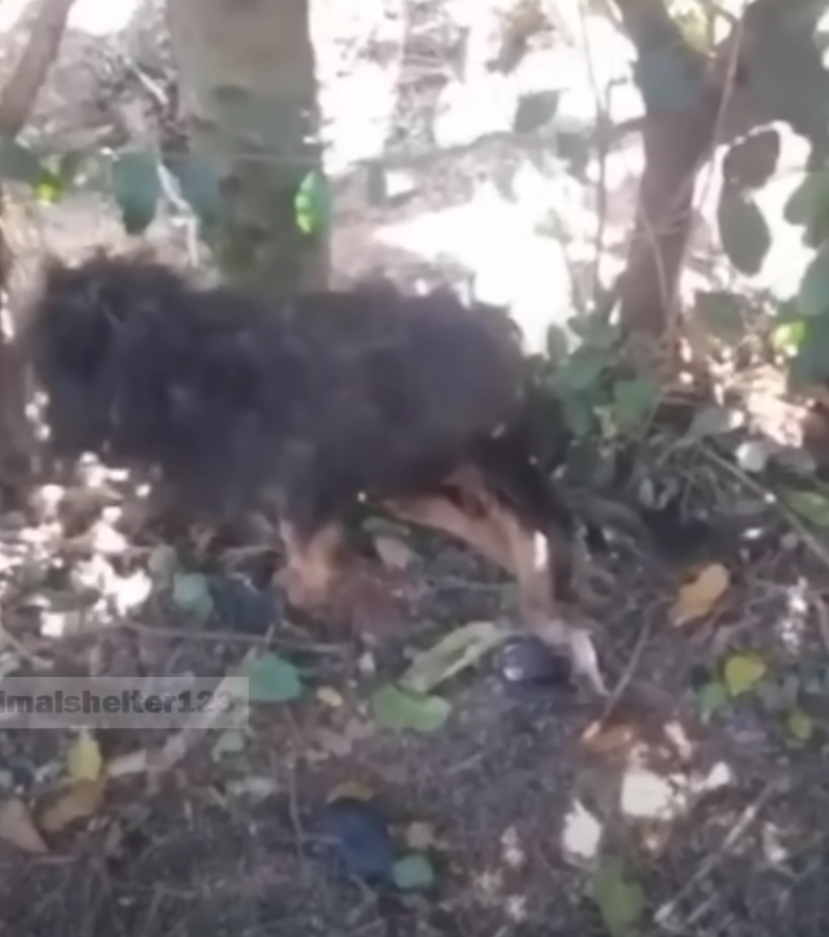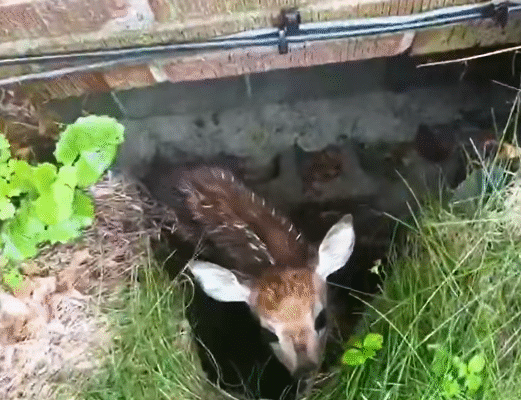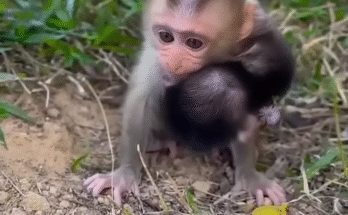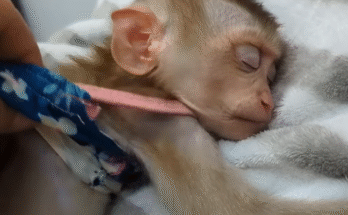One quiet morning, as the golden light of dawn spilled gently over the hills, I took a walk through the forest near my home. I often went there to clear my head, to listen to birds chirping and leaves rustling. That day, however, something extraordinary happened—something that would change the course of my summer and leave a lasting mark on my heart.
As I walked along a familiar trail, I heard a soft, distressed bleat. It was faint, almost like a whisper among the trees, but enough to make me stop. I paused, listening more intently. Again, the sound came—a high-pitched cry, unmistakably from an animal in trouble. I followed the sound off the beaten path, pushing past undergrowth and stepping carefully over mossy roots. And then I saw it.

Lying in a small clearing was a tiny baby deer—no bigger than a medium-sized dog—with trembling legs and wide, frightened eyes. It had a small cut on its flank, likely from brushing too hard against a sharp branch or maybe getting tangled in the brush. Its breathing was shallow, and it looked too weak to stand. My heart clenched. I didn’t know where its mother was, or how long it had been lying there alone, but I knew one thing: I couldn’t leave it.
I knelt down slowly, speaking in a calm, soothing voice. “Hey, little one… it’s okay. I’m not going to hurt you.” I wasn’t sure if it could understand me, but I wanted it to know I meant no harm. I reached out gently, and to my surprise, it didn’t try to flee. It flinched a little, but it didn’t bolt. That told me just how exhausted it must be.
Very carefully, I examined the cut. It wasn’t too deep, but it needed to be cleaned. I wrapped the deer in my jacket, trying to keep it warm and safe, then carried it back home. I live just on the edge of the forest, so it wasn’t a long walk, but it felt like the longest, most delicate journey of my life.
Once home, I laid the fawn on a soft blanket in a quiet corner of my porch. I called the local wildlife rescue for advice and was told that if the wound was minor and the mother didn’t return after a day, I could either bring it to a wildlife center or, if I was able, care for it temporarily until they had room. After gently cleaning the wound and offering it some water with a dropper, I sat with the deer for a long time. Its eyes gradually lost their panic, and it leaned into my touch. That’s when I felt the first spark of connection.
The next day, I returned the deer—now named “Willow,” for the way it curled up like a small sapling under stress—to the clearing, hoping its mother would return. I waited for hours, hiding in the trees, but no other deer came. It seemed Willow had been abandoned or orphaned. I knew then that she’d need more help, at least for a while.
Over the next few weeks, Willow stayed with me. I did everything I could to replicate the forest in my backyard. I planted clover patches, let my grass grow longer, and even created a small shaded area with branches and leaves. I fed her a diet of special deer milk formula and fresh greens. At first, she was shy and skittish, but slowly, she began to trust me. Every morning, I’d find her waiting outside my door, tail twitching and eyes alert.
One evening, about a month after I found her, I was sitting outside reading a book when I felt a gentle nudge against my knee. It was Willow, sniffing curiously at the pages. I laughed and scratched behind her ears, and she closed her eyes contentedly. In that moment, I realized something remarkable—this wasn’t just an animal I was helping. We had become friends.
Willow followed me around like a shadow. When I gardened, she’d nibble nearby plants. When I washed the car, she’d watch the water spray with curiosity. And whenever I sat down to rest, she’d lie beside me, her soft body warm against my leg. She even started recognizing her name and would come when I called—though sometimes only if I had apples or carrots.
As time went on, Willow grew stronger, taller, and more independent. I knew I couldn’t keep her forever. She belonged in the wild. So I began preparing her for the inevitable return to nature. I took her on longer walks through the forest, slowly decreasing my involvement, letting her explore on her own. It was hard, but I knew it was the right thing to do.
One cool autumn morning, Willow didn’t come back right away after wandering deeper into the woods. I waited for hours, heart heavy. I called her name, left some food out, and sat on the porch, hoping to see her ears poke out from the trees. She didn’t return that night. Nor the next.
I was heartbroken but also proud. She had grown into a strong, capable creature who could survive on her own. That was what I had hoped for from the beginning. And still, a part of me missed her terribly.
Then, one morning a week later, I looked out into the yard and saw her—standing tall and confident at the edge of the trees. She looked at me for a long moment. Then, she took a few steps closer, just enough for me to see the faint scar on her flank. I didn’t move. I didn’t speak. I just smiled. After a moment, she turned and disappeared back into the forest.
That wasn’t the last time I saw her. Every few weeks, she’d return—never staying long, but always pausing as if to say hello. Sometimes, she even brought other deer with her, who stayed farther back but didn’t seem afraid. It was like she was showing them: “This human? This one’s okay.”



